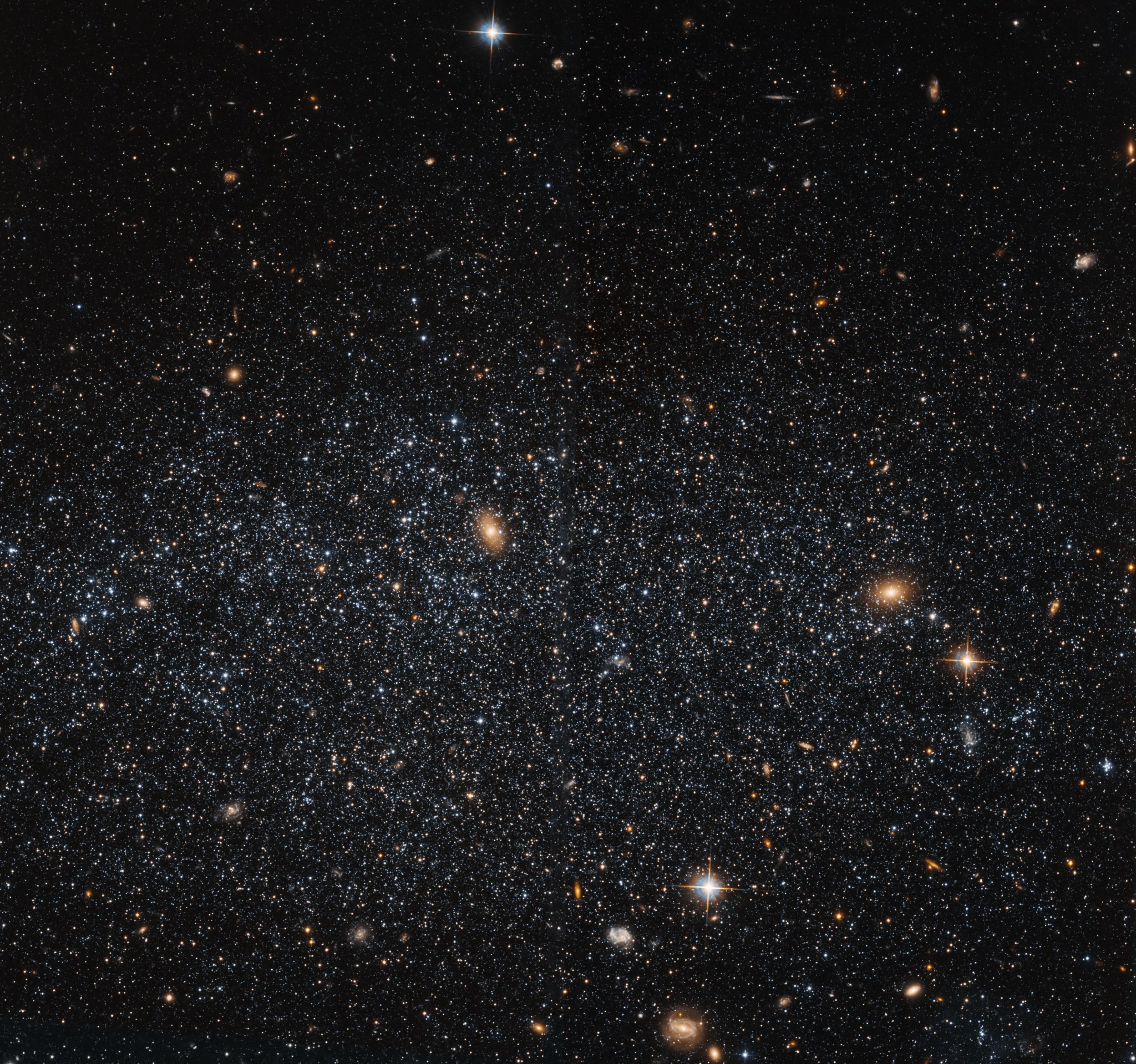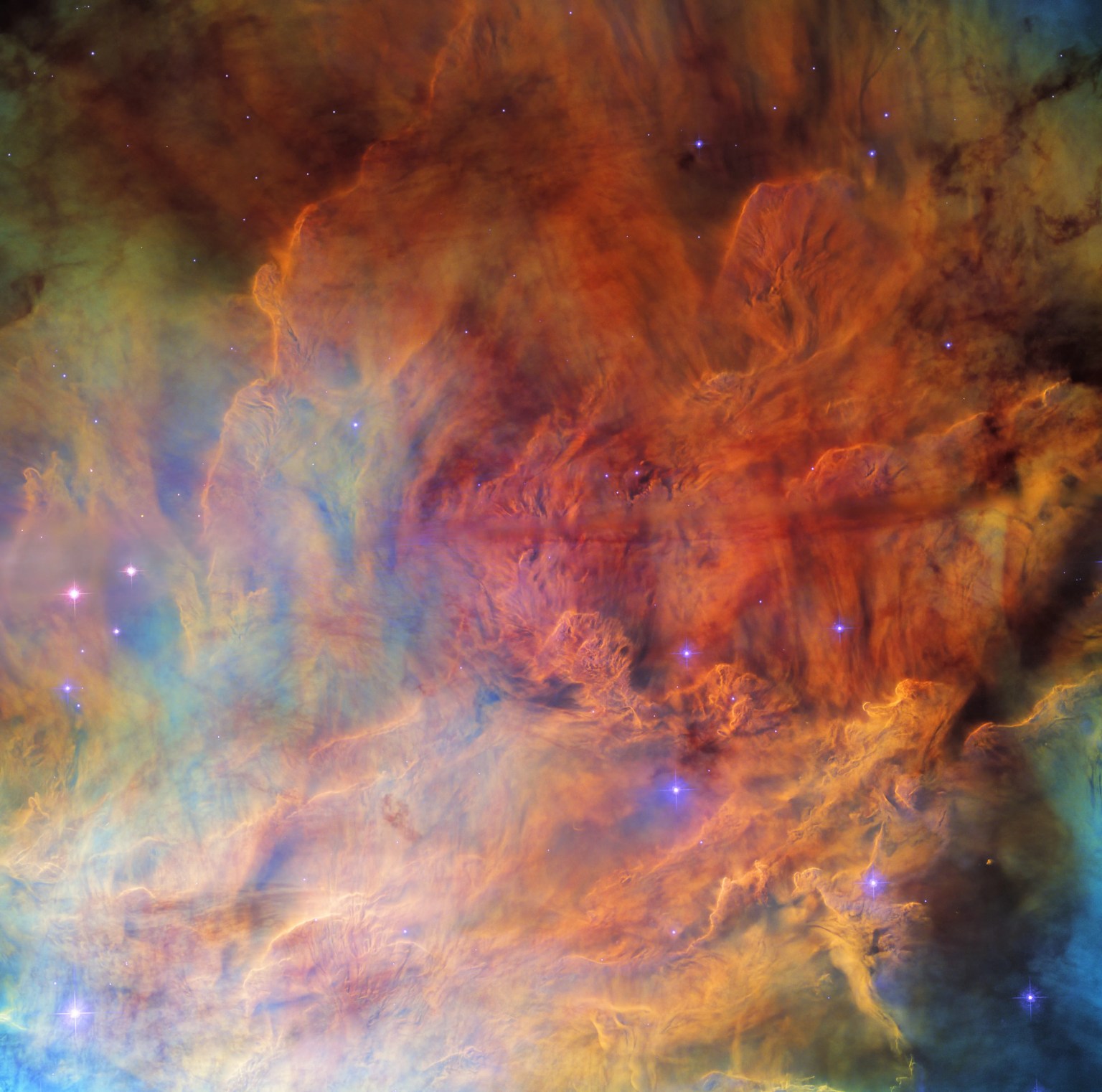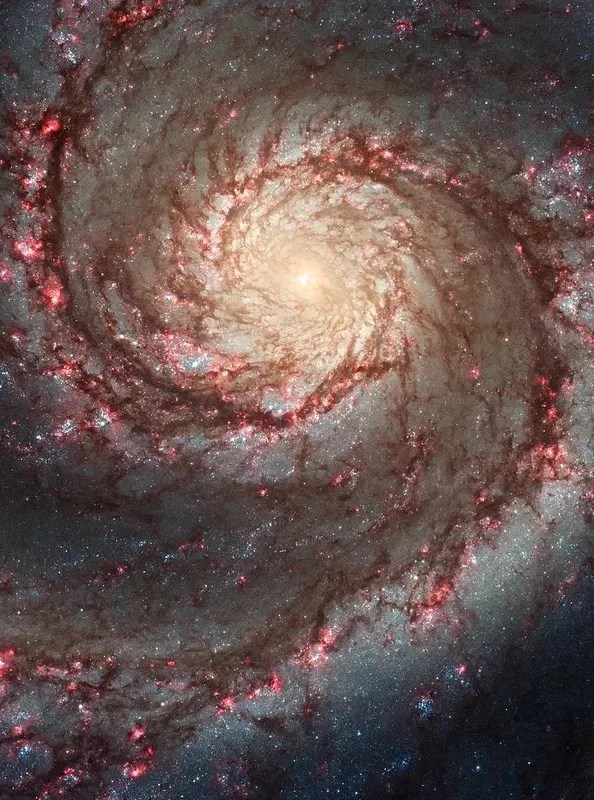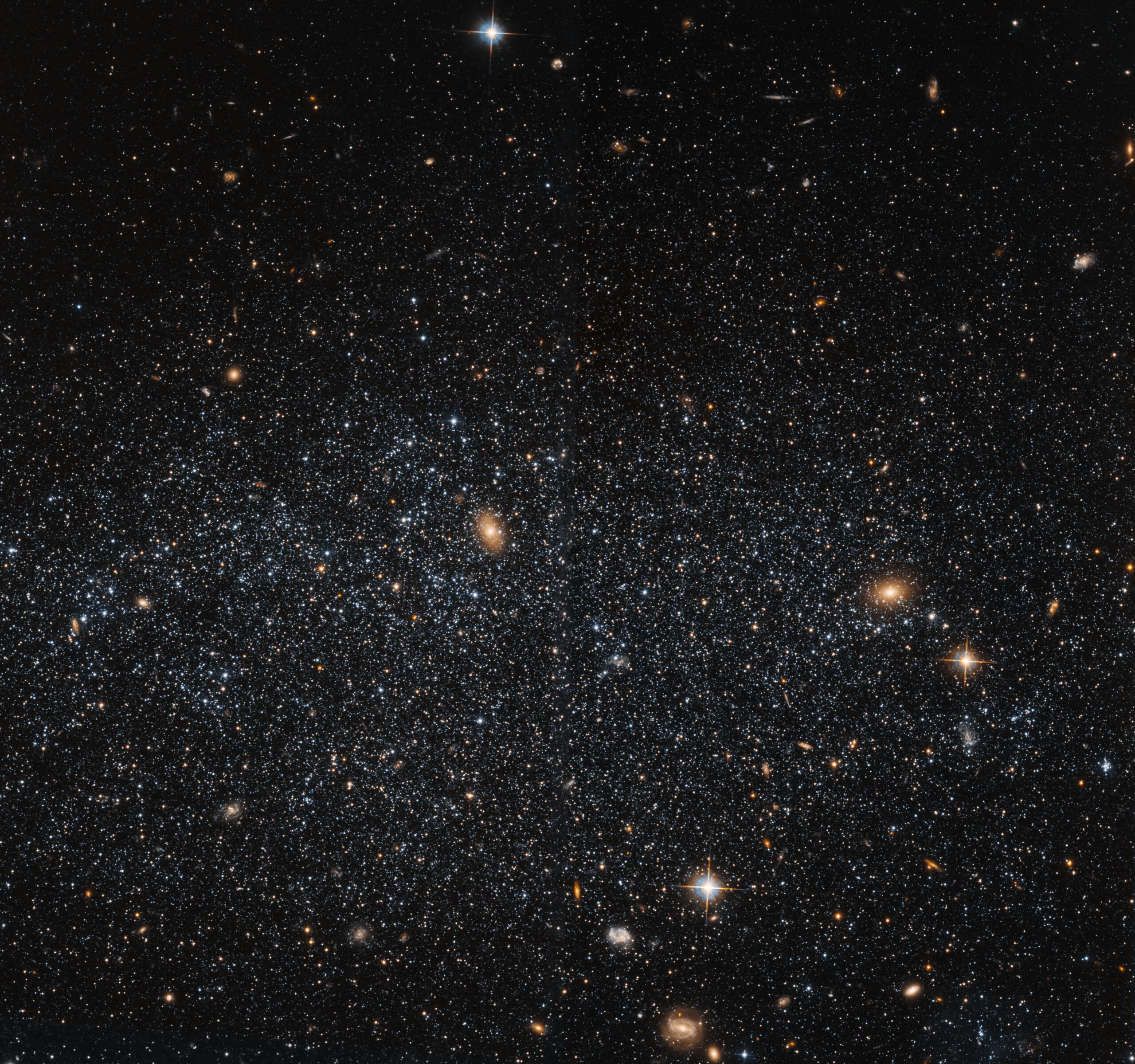2 min read
Hubble Finds Structure in an Unstructured Galaxy  NASA, ESA, A. del Pino Molina (CEFCA), K. Gilbert and R. van der Marel (STScI), A. Cole (University of Tasmania); Image Processing: Gladys Kober (NASA/Catholic University of America) This NASA Hubble Space Telescope image features the nearby dwarf irregular galaxy Leo A, located some 2.6 million light-years away. The relatively open distribution of stars in this diminutive galaxy allows light from distant background galaxies to shine through.
NASA, ESA, A. del Pino Molina (CEFCA), K. Gilbert and R. van der Marel (STScI), A. Cole (University of Tasmania); Image Processing: Gladys Kober (NASA/Catholic University of America) This NASA Hubble Space Telescope image features the nearby dwarf irregular galaxy Leo A, located some 2.6 million light-years away. The relatively open distribution of stars in this diminutive galaxy allows light from distant background galaxies to shine through.
Astronomers study dwarf galaxies like Leo A because they are numerous and may offer clues to how galaxies grow and evolve. Dwarf galaxies are small and dim making the most distant members of this galaxy type difficult to study. As a result, astronomers point their telescopes toward those that are relatively near to our own Milky Way galaxy, like Leo A.
Leo A is one of the most isolated galaxies in our Local Group of galaxies. Its form appears as a roughly spherical, sparsely populated mass of stars with no obvious structural features like spiral arms.
The data that created this image come from four Hubble observing programs. Three of these looked at star formation histories of relatively nearby dwarf galaxies. The fourth sought to better determine the mass of our Local Group by looking at the motions of dwarf galaxies just outside of the Local Group.
The Hubble observations that looked at star formation found distinct structural differences in the age and distribution of stars in the galaxy. Most of the younger stars are located in the middle of the galaxy, while the number of older stars increases as you move outward from the center. Hubble observations also suggest that the galaxy’s halo of stars is about one-third larger than previous estimates. This distribution suggests that star formation in Leo A occurred from the outside-in, or that older stars efficiently migrated to the outskirts of Leo A in the early stages of its evolution.
Explore More
Hubble’s Galaxies
Facebook logo @NASAHubble @NASAHubble Instagram logo @NASAHubble Media Contact:
Claire Andreoli
NASA’s Goddard Space Flight Center, Greenbelt, MD
claire.andreoli@nasa.gov
Details Last Updated Aug 22, 2024 Editor Michelle Belleville Location NASA Goddard Space Flight Center Related Terms Astrophysics Galaxies Goddard Space Flight Center Hubble Space Telescope Stars
Keep Exploring Discover More Topics From NASA Hubble Space Telescope
Since its 1990 launch, the Hubble Space Telescope has changed our fundamental understanding of the universe.






